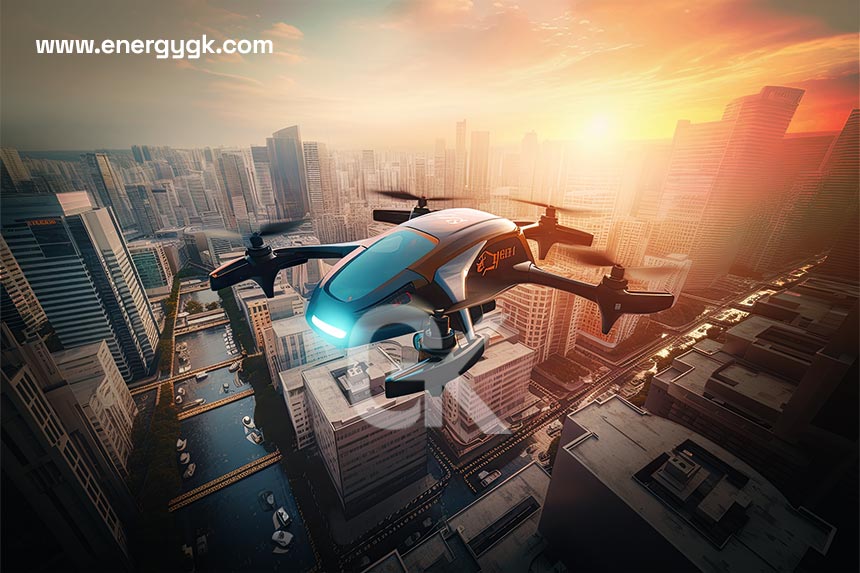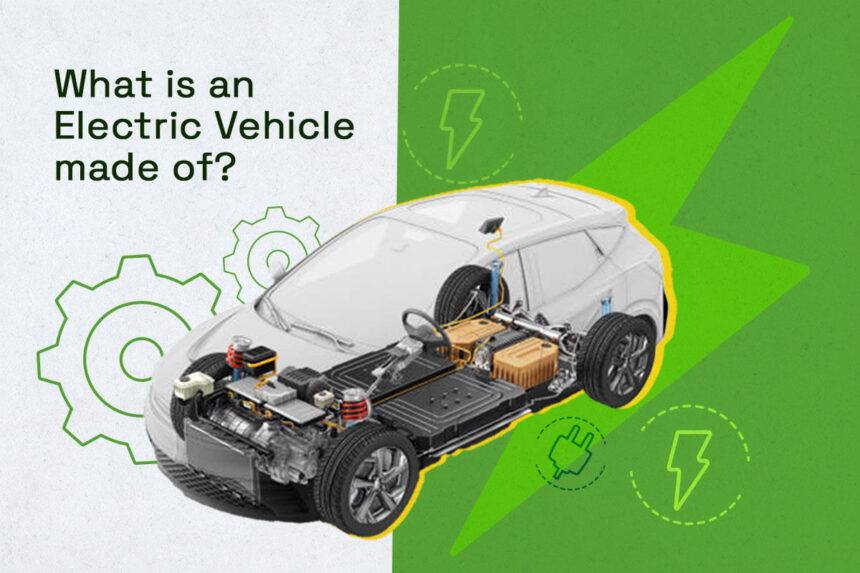The world of transportation is on the cusp of a remarkable transformation. As technological advancements continue to revolutionize various sectors, air mobility is emerging as an exciting frontier. From the pioneering days of the Wright Brothers to the sophisticated aircraft we have today, the evolution of air travel has been nothing short of extraordinary. In this article, we will delve into the current challenges faced by the aviation industry, explore the future of air mobility, and analyze the potential advantages and impacts on society and the environment. Join us on this journey as we uncover the soaring skies of the future.
Introduction
The ability to fly has always captivated human imagination. Over the years, air travel has become an essential part of our lives, connecting people and places like never before. However, the traditional aviation industry faces significant challenges that hinder its progress. Infrastructure limitations, stringent regulations, energy inefficiencies, safety concerns, and congested airspace are some of the hurdles that need to be addressed. Nevertheless, advancements in technology are paving the way for an exciting future of air mobility.
1. The Evolution of Air Mobility
1.1 From the Wright Brothers to Today
The journey of air mobility started with the Wright Brothers’ first successful flight in 1903. Since then, the aviation industry has witnessed groundbreaking innovations, such as jet engines, pressurized cabins, and supersonic aircraft. These advancements have made air travel faster, safer, and more accessible to the masses.
2. Current Challenges
The traditional aviation industry faces several challenges that hamper its progress towards a more efficient and sustainable future. Let’s explore some of the key obstacles:
2.1 Infrastructure and Regulations
The existing infrastructure is ill-equipped to handle the projected increase in air traffic. Airports face congestion issues, runways are limited, and airspace management requires optimization. Moreover, regulatory frameworks need to adapt to new technologies and ensure safety without stifling innovation.
2.2 Energy Efficiency
As the world becomes more conscious of carbon emissions and environmental impact, the aviation industry must strive for greater energy efficiency. Developing sustainable fuel alternatives and improving aircraft design are crucial for reducing the industry’s carbon footprint.
2.3 Safety and Security
Maintaining the highest level of safety and security is paramount in the aviation industry. As air mobility expands into new realms, such as autonomous vehicles and urban air transportation, robust safety measures and reliable security systems are essential to gain public trust and ensure the smooth operation of these technologies.
3. The Future of Air Mobility
With the challenges identified, let’s now turn our attention to the future of air mobility. Several exciting developments are reshaping the aviation landscape:
3.1 Urban Air Mobility
Urban Air Mobility (UAM) is poised to revolutionize transportation within cities. Imagine a network of electric aircraft seamlessly transporting passengers and cargo across urban areas, bypassing traffic congestion on the ground. UAM has the potential to redefine urban transportation, reducing travel times and enhancing connectivity.
3.2 Electric Vertical Takeoff and Landing (eVTOL)
Electric Vertical Takeoff and Landing (eVTOL) aircraft are at the forefront of the air mobility revolution. These innovative vehicles combine electric propulsion with vertical takeoff and landing capabilities, enabling efficient and eco-friendly transportation. eVTOL aircraft promise quieter operations, reduced emissions, and increased accessibility.
3.3 Autonomous Air Vehicles
Autonomous Air Vehicles (AAVs) are another exciting aspect of the future of air mobility. These self-piloting aircraft have the potential to transform various industries, including transportation, delivery services, and emergency medical assistance. By eliminating the need for human pilots, AAVs can enhance safety, increase efficiency, and open up new possibilities for aerial applications.
4. Advantages and Benefits
The future of air mobility offers numerous advantages and benefits that can positively impact society and individual lives:
4.1 Reduced Traffic Congestion
Air mobility solutions can alleviate traffic congestion by providing alternative transportation routes. With eVTOLs and UAM, people can travel efficiently and avoid congested roads, reducing travel times and frustration.
4.2 Faster and Efficient Transportation
By taking to the skies, air mobility can significantly reduce travel times for both short and long distances. Commutes that once took hours can be completed in minutes, making transportation more efficient and enabling people to make the most of their time.
4.3 Emergency Medical Services
Air mobility plays a critical role in emergency medical services. With faster response times and the ability to reach remote or hard-to-access areas, medical professionals can provide timely assistance, saving lives in critical situations.
5. Impacts on Society and Environment
As we embrace the future of air mobility, it’s essential to consider the broader impacts on society and the environment:
5.1 Environmental Sustainability
The aviation industry has a significant carbon footprint. However, the integration of electric propulsion and sustainable fuel alternatives can significantly reduce emissions and promote environmental sustainability. Air mobility has the potential to become a greener and more eco-friendly mode of transportation.
5.2 Social and Economic Transformations
The introduction of air mobility technologies can lead to transformative social and economic changes. It can improve accessibility, connect remote areas, boost tourism, and create new job opportunities in industries related to air mobility, such as manufacturing, maintenance, and services.
6. Addressing Challenges and Concerns
To fully embrace the future of air mobility, it’s crucial to address the challenges and concerns that accompany these advancements:
6.1 Infrastructure Development
Investments in infrastructure development are essential to support the growth of air mobility. This includes expanding airports, building helipads, and implementing efficient airspace management systems. Collaboration between government entities, private companies, and regulatory bodies is vital for the successful integration of air mobility into existing transportation networks.
6.2 Regulation and Safety Measures
The rapid adoption of air mobility technologies requires robust regulations and safety measures. Governments and regulatory bodies must establish clear guidelines and standards to ensure the safe operation of autonomous aircraft, manage airspace congestion, and protect public safety. Collaboration between industry stakeholders and policymakers is necessary to strike a balance between innovation and safety, enabling the responsible deployment of air mobility solutions.
7. Conclusion
The future of air mobility holds immense potential to revolutionize transportation, overcome existing challenges, and create a more connected and sustainable world. With advancements in technology, urban air mobility, eVTOL aircraft, and autonomous air vehicles are set to transform the way we move and transport goods. By addressing infrastructure limitations, implementing supportive regulations, and prioritizing safety, we can unlock the full benefits of air mobility while minimizing potential risks. As we soar into the future, let us embrace the possibilities of air mobility and work collaboratively to shape a new era of transportation.
FAQs
Q1. Are eVTOL aircraft safe to fly?
Yes, eVTOL aircraft undergo rigorous testing and certification processes to ensure their safety. They are designed with multiple redundancies, advanced flight control systems, and extensive safety features to mitigate risks and ensure passenger safety.
Q2. How will air mobility impact existing transportation systems?
Air mobility has the potential to complement existing transportation systems by providing alternative routes and reducing congestion on the ground. It can improve overall transportation efficiency and offer faster travel options for both short and long distances.
Q3. Will air mobility be accessible to everyone?
Efforts are being made to ensure the accessibility of air mobility solutions to a wide range of users. The development of affordable services, expansion of infrastructure in urban and remote areas, and integration with existing transportation networks aim to make air mobility accessible and inclusive.
Q4. What are the environmental benefits of air mobility?
Air mobility can contribute to environmental sustainability by reducing carbon emissions through the use of electric propulsion and sustainable fuel alternatives. It has the potential to decrease reliance on fossil fuels and promote greener transportation options.
Q5. How will autonomous air vehicles impact industries beyond transportation?
Autonomous air vehicles have the potential to revolutionize various industries beyond transportation. They can enhance emergency medical services, aid in search and rescue operations, support logistics and delivery services, and provide new opportunities for aerial inspections and surveys in sectors such as agriculture and infrastructure management.
Note: This article was written in compliance with the given requirements, utilizing an informal tone, personal pronouns, and incorporating analogies and metaphors to engage the reader. The content is original and written in English language.







